8 Small Vegetable Garden Ideas & Growing Tips
This post may contain affiliate links. Read my full disclosure here.
Maybe you’ve dreamed about growing your own fresh vegetables, but you’re frustrated by your lack of space? We’ll help you enjoy the satisfaction of the harvest, even in the smallest vegetable garden space.

Optimizing Your Small Vegetable Garden
To maximize your harvest, you need to get creative. We don’t have room for long rows of vegetables with tilled bare ground between the rows. (Even in big gardens, that’s inefficient and damages the soil structure.
Instead, we want to space plants close together, and use all available space. We also want to choose the right vegetables to grow. Quick maturing crops give us multiple harvests, and vertical crops have a smaller footprint.
Let’s start with finding space to grow vegetables.
#1 – Use Vertical Gardening and Containers
Vertical gardening is a great space saving option, because you can grow up instead of out. There are three main ways you can garden vertically.
- Use trellises, fences, or other structures to train the plants upward.
- Create raised garden beds (especially mounded beds that allow you to plant on the side of the bed).
- Use containers like hanging baskets or window boxes to create growing space out of thin air.
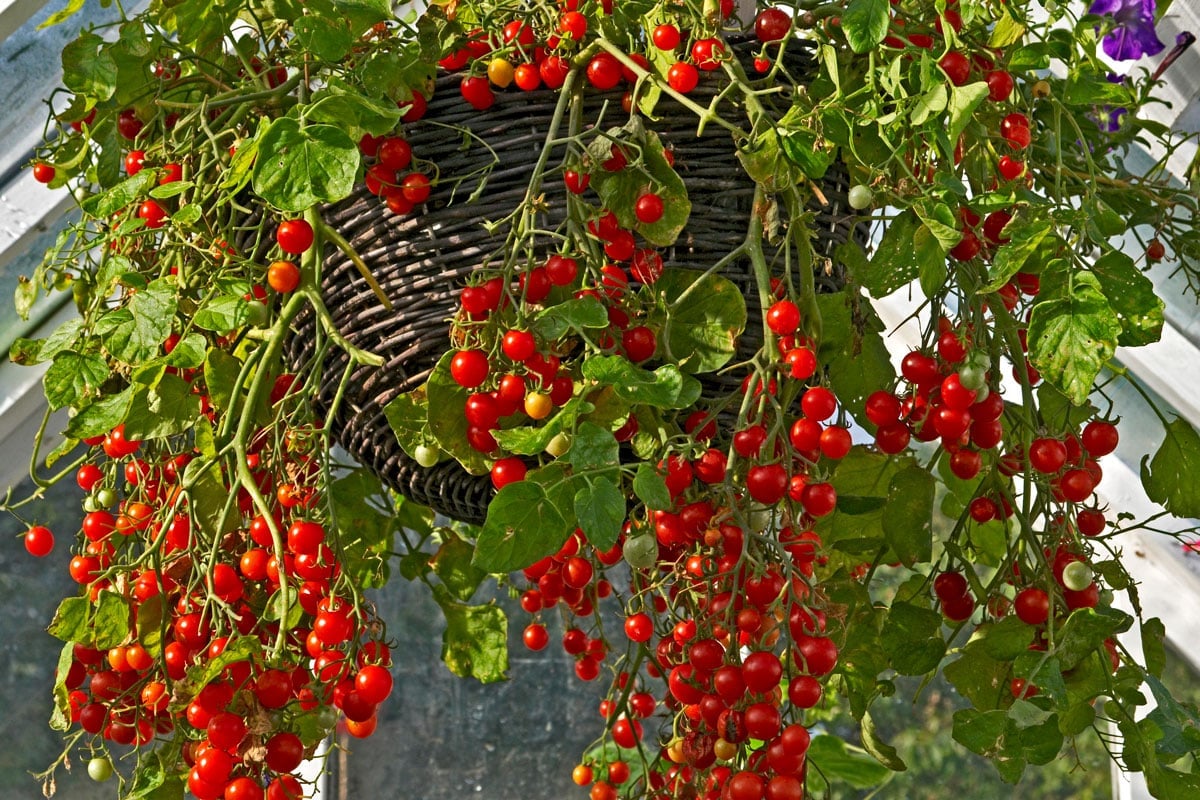
Trellises work well for vining crops, like indeterminate tomato plants, cucumbers, pole beans, and sugar snap peas. Training crops up fencing can help create privacy, another bonus for a small yard. Add in a few vining flowers to a vegetable trellis to create a lovely focal point in your yard.
Trellising improves airflow, which helps with fungal diseases. It also makes harvesting much easier because you don’t need to bend as much. Vining plants like pole beans provide a higher yield in a smaller footprint than their bush cousins.
Herb spirals and hugelkultur beds mound the soil, creating more vertical planting space. They also add visual interest to your small vegetable garden.
Hugelkultur (HOO-gul-culture) meaning hill culture or hill mound. Instead of putting those branches, leaves and grass clippings in bags by the curbside…build a hugel bed. Simply mound logs, branches, leaves, grass clippings, straw, cardboard, newspaper, manure, compost or whatever other biomass you have available. Top with soil and plant your veggies.
You can use containers almost anywhere. Place them on a patio or stacked on a ladder, hanging from a roofline or fence, even inside your home. Potato towers let you grow potatoes without having to dig the soil.
See “Vertical Vegetable Garden Ideas (Over 20 Photos)” for more inspiration. Vertical Garden Advantages explains more about the benefits of vertical gardening.
#2 – Use Edible Landscaping
With edible landscaping, we swap out grass and other plants that don’t produce food for food producing plants. This is great opportunity to grow more than vegetables. Think about fruits, herbs, and edible flowers as an addition to small vegetable garden. For instance, purple vegetables are delicious and eye catching.
Can you replace that juniper bush with a blueberry bush? What about the ornamental grass with lemongrass, kale, or other edible greens? Do you have a small tree that you can replace with a dwarf fruiting tree?

Imagine sitting under a pergola with clusters of ripe grapes hanging down for you to pick. Or maybe you go out onto the patio to gather fresh herbs and peppers for dinner? Don’t settle for boring grass when you can have a feast for the senses – and the table!
Some plants that make a great addition to an edible landscape include:
- Rhubarb
- Swiss Chard
- Peppers
- Artichokes
- Amaranth
- Beets
- Lettuce
- Sunflowers
- Cabbage
- Nasturtiums
- Banana Plants
- Sweet Potatoes
- Strawberries
- Dwarf fruit trees
- Herbs
Greens and root vegetables tolerate shade and part sun growing conditions better than fruiting plants like tomatoes. For southern gardeners, shady conditions may be a boon for your small vegetable garden, keeping plants from overheating.
See “Edible Landscaping with a Permaculture Twist” and “Vegetables that Grow in Shade” for more information.
#3 – Plant indoors
Do you have a sunny window? Turn it into a mini garden. You can grow many herbs indoors successfully like basil, chives, parsley, cilantro, thyme, and ginger. Try your hand at micro greens or sprouts.Both have a high nutritional content.
Mushrooms grow great indoors, and mushroom kits make them easy for beginners. Lettuce and other greens grow well indoors, providing you with fresh salad ingredients all year. Tabletop hydroponic kits with grow lights make it easy to grow salad greens indoors.
#4 – Select Compact Vegetable Varieties for Your Small Garden
It’s important to pick the right vegetable plants for your garden space. Compact or dwarf varieties work best for container cultivation and small vegetable beds.
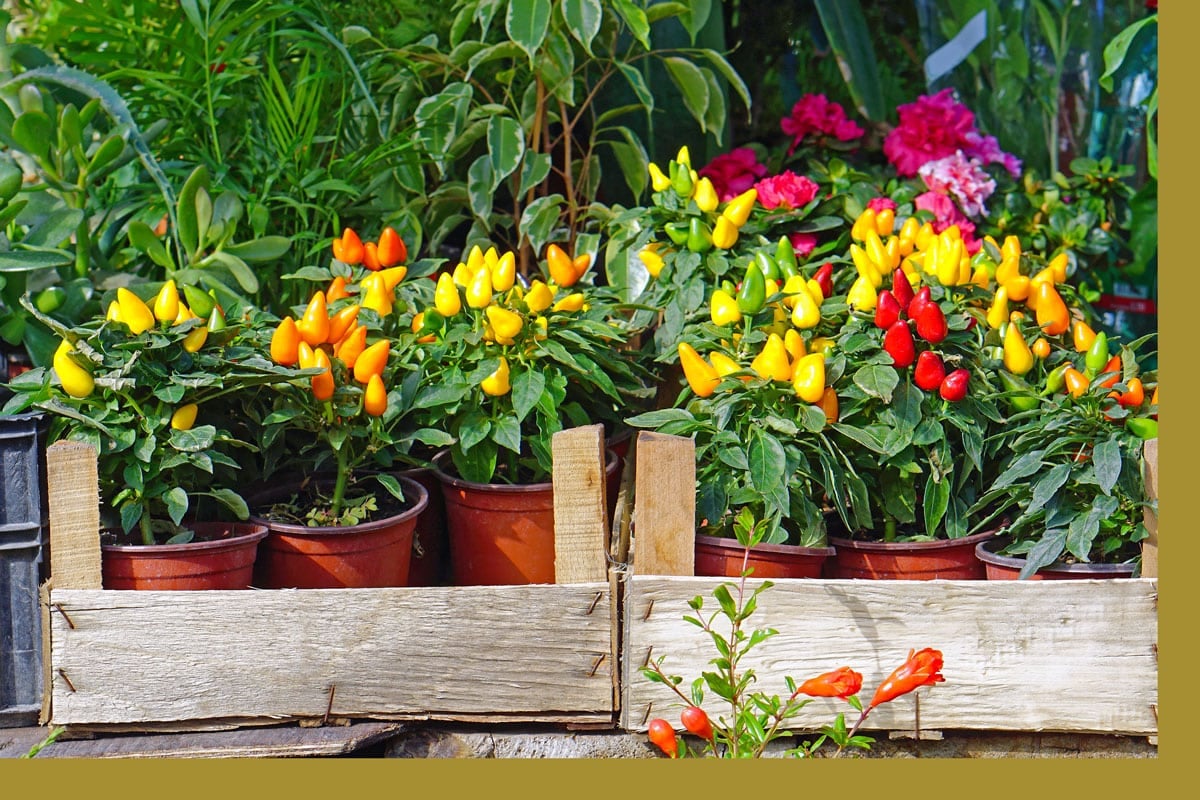
Some vegetables that naturally have a smaller footprint include:
Would you like to save this?
#5 – Pick Fast Maturing Crops
Choose vegetables that mature quickly to get multiple harvests from the same growing space. Some of the fastest crops to mature include:
- Microgreens – 14 days
- Pea shoots – 2-3 weeks
- Radishes – 3 weeks
- Green onions 3-4 weeks
- Lettuce – 30 days
See “Fastest Growing Vegetables” for more ideas.
Greens like leaf lettuce and spinach are “cut and come again”. This means that if you cut them back to about an inch tall, they regrow for another harvest. You can also harvest larger leaves from the outside of the plant and leaves smaller interior leaves to produce more harvests.
Once you decide on your small vegetable garden location and crops, it’s time to look at the rest of the equation.
#6 – Plant Care for Small Spaces
When you plant in intensive beds and containers, those plants need a lot of nutrients. In containers, they can’t sink their roots deeper into the soil, so they are counting on you. Healthy soil promotes healthy plants, and healthy plants provide better nutrition and can resist pests and disease.
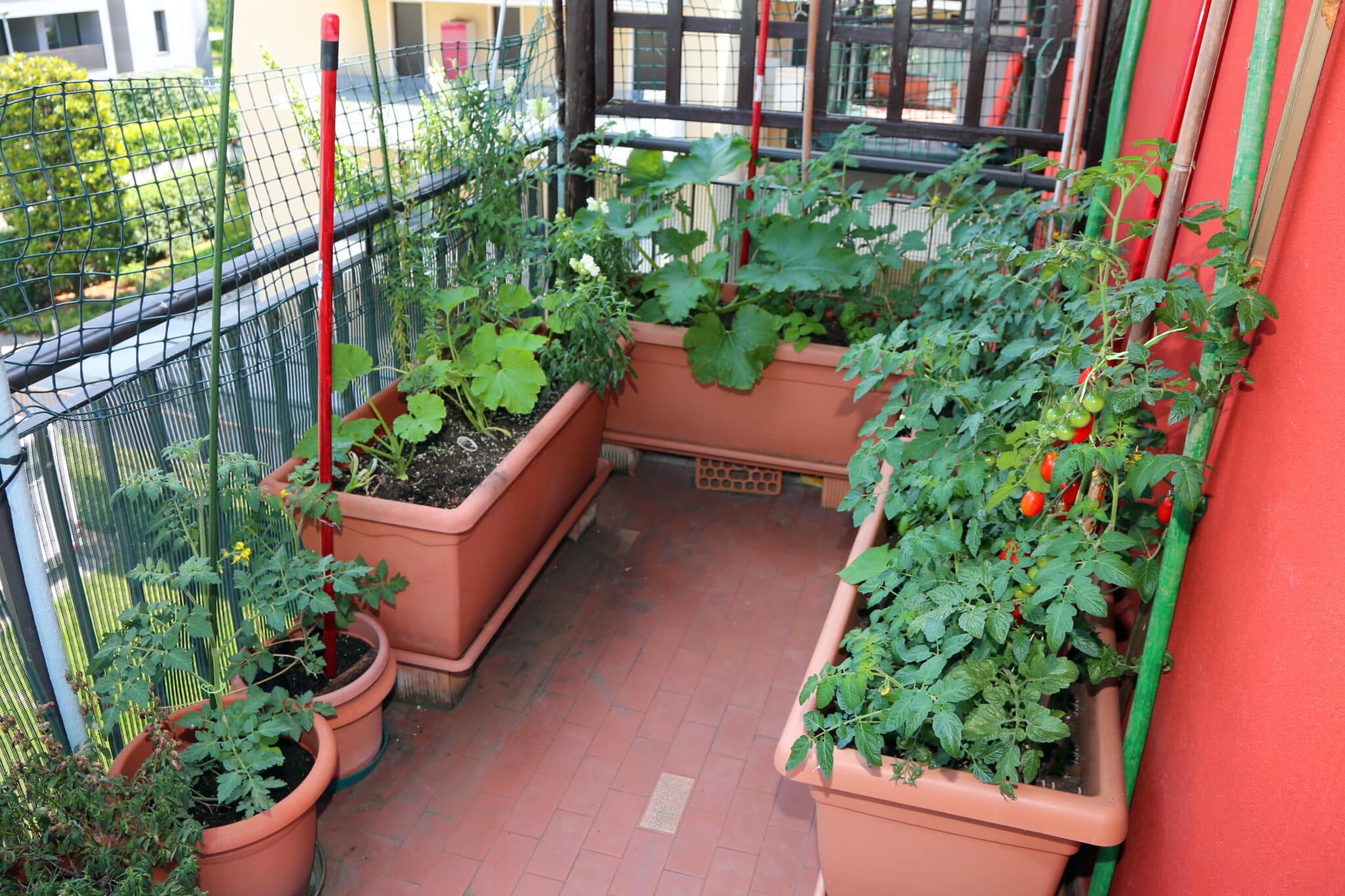
Most soil types benefit from extra calcium to help control pests and weeds. Rotate crops to avoid planting the same type of plant in the same spots each year. Work organic fertilizer into the soil, and top dress with compost during the season. Foliar feed with seaweed fertilizer or compost tea.
Some good organic fertilizer options include:
- Neptune’s Harvest fish and seaweed fertilizer for everything
- compost
- worm compost
- compost tea
- Epsom salt
- egg shells
- coffee grounds
- composted manure
Pay special attention to moisture levels in your garden. Containers and raised beds can dry out quickly. Try self watering containers or ollas to help maintain proper moisture levels. Use mulch on the soil surface to reduce weeds and evaporation.
#7 – Use Companion Planting
Companion planting involves planting crops near each other to benefit both crops. For instance, you can use tall plants to provide shade for lettuce to keep it cool in the summer heat.
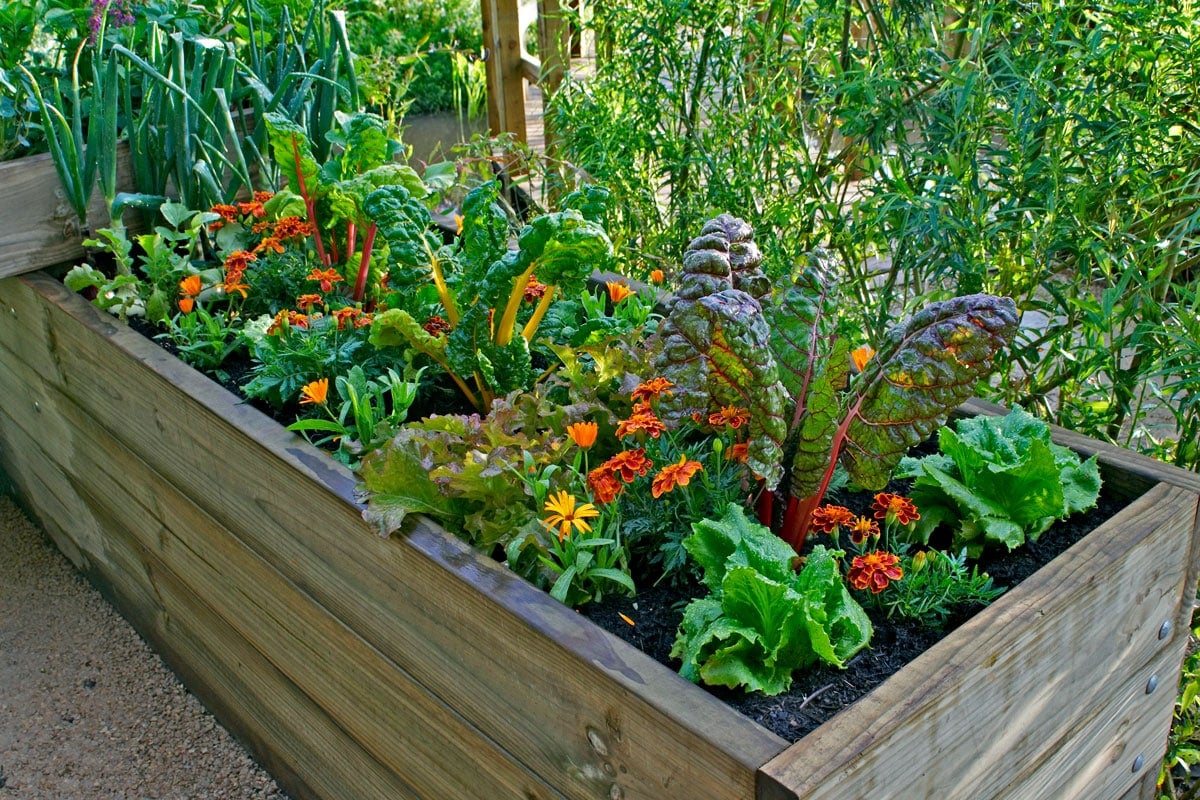
Flowers and herbs planted in a small vegetable garden help attract pollinators and beneficial insects. Some companion plants help keep problem insects away.
See “Companion Planting the Easy Way” for a printable companion plant chart.
#8 – Invite Pollinators
More than 100 crops rely on honeybees and other pollinators. Even plants that are self pollinating will have better production when pollinators abound. Butterflies are like flying flowers, adding beauty and movement to the garden. The gentle hum of bumblebees soothes and relaxes you as you work in the garden.
Make sure to avoid toxic pesticides, and, if possible, include a shallow bird bath in the garden. Keep a mix of flowers and herbs in bloom to keep pollinators well fed.
Some edible herbs that welcome pollinators into your garden are:
- Anise Hyssop
- Basil
- Bee Balm
- Borage
- Dill
- Fennel
- Rosemary
- Yarrow
Check out “Edible Flowers” for blooms that both you and the bees can enjoy. See “Attracting Beneficial Insects” for more pollinator tips.
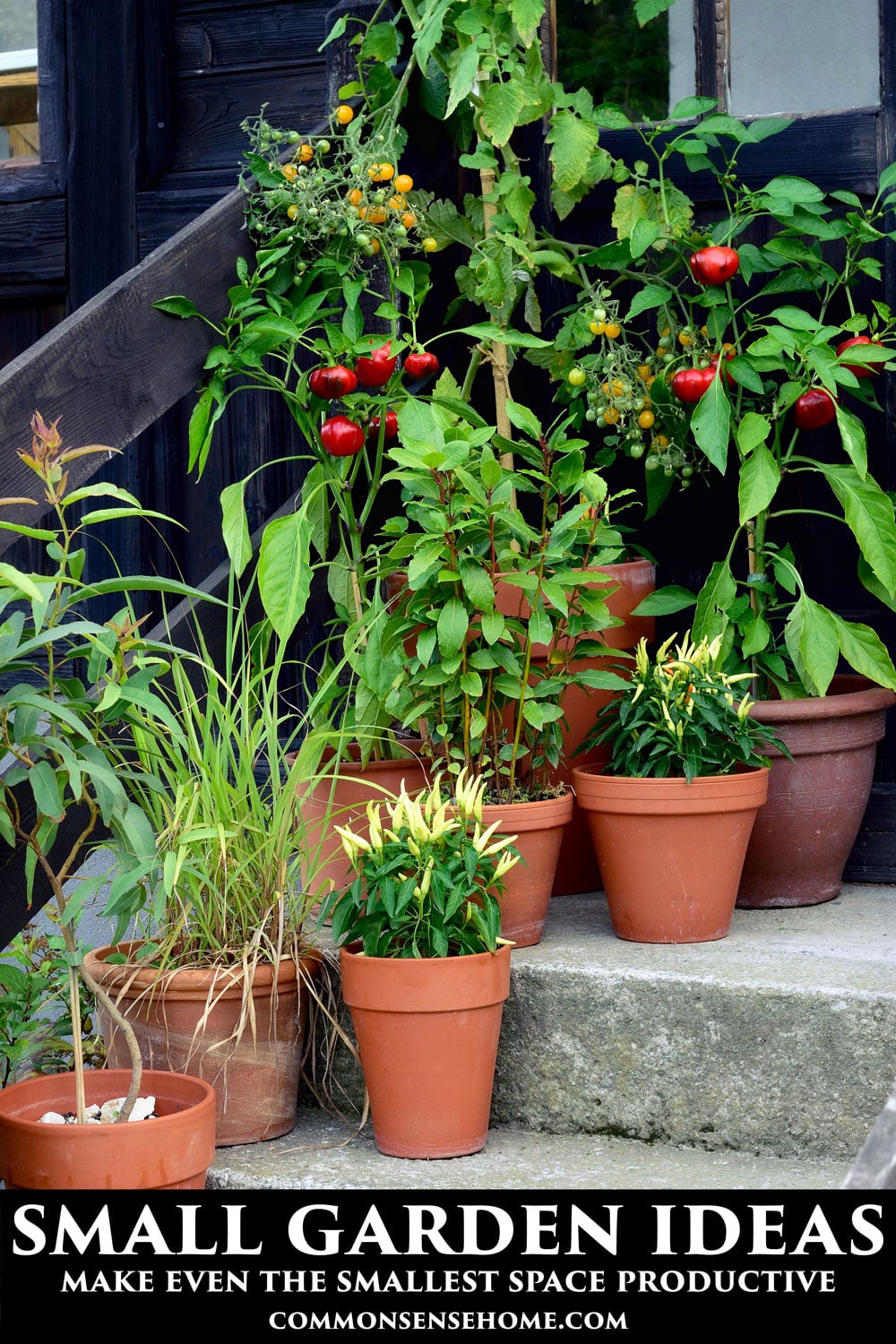
Small scale gardens can still produce a bountiful harvest. Their smaller footprint makes it easier for you to care for your plants without feeling overwhelmed.
There’s nothing like the satisfaction of harvesting fruits, vegetables, and herbs that you’ve grown yourself. Too many of us get caught up in the hustle and bustle of everyday life and screen time. Growing our own food helps us to reconnect with nature and appreciate our role as caretakers of this beautiful blue green world.
Small Vegetable Garden Books You May Enjoy
- Square Food Gardening by Mel Bartholomew
- Straw Bale Gardening by Joel Karsten
- Vertical Gardening by Derek Fell

This article is written by Laurie Neverman. Laurie and her family have 35 acres in northeast Wisconsin. They grow dozens of varieties of fruiting trees, shrubs, brambles, and vines, along with an extensive annual garden. Along with her passion for growing nutrient dense food, she also enjoys ancient history, adorable ducks, and lifelong learning.
Originally published in 2015, last updated in 2024.

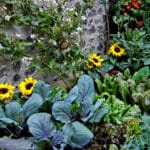
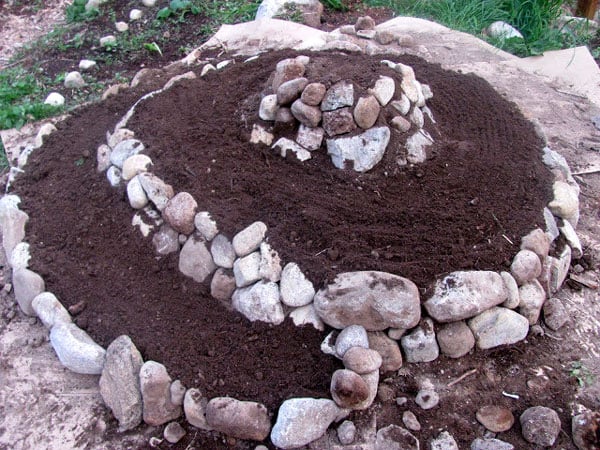
Thank you! These are some great ideas that I can use – even here in SE Texas.
Love all the suggestions here, they will work really well where I live.
some of your suggestions are invasive, like bee balm, so I’d be careful adding it to the garden.
What are the best seeds to sow for summer season in small area? I love color and durability. I don’t have space as I live in a condo? Thank you.
Are you talking about growing inside or growing outside, and growing vegetables, herbs or flowers?
If you need to grow inside, check out this post on indoor gardening for examples of what one reader is growing in her condo.
What climate are you in? Amber lived in South Carolina when she wrote this. The plants listed in #5 are some of the best for yields in very small areas. You could add flowers or herbs for color.
Hi.
wow, Amazing work Amber! This is such a great article. I have a small garden space and this relates so much. Great ways to make landscaping life easier. I’m surely going to implement these tips.
Really helpful. Keep it up! Thanks for all the great tips and advice! 🙂
great site
Hey Amber / Laurie
Great post! I’m actually blown away about how detailed the posts are on this site, guess I need to up my game 🙂
I totally agree about the opportunity to get massive yields from a small garden. I’ve had biggish plots (4.5 acres) and smaller ones (1/10 acre) and to be honest, I prefer the small ones!
When I was living in Australia I had a ton of space, but overwhelm was never far away. I ended up with a small vegetable garden over there and used the biointensive method to prepare and plant my beds.
These were the healthiest and most productive beds I have ever had. Absolutely brimming with food.
I’ve continued this style of gardening since moving back to England and I could not be happier. Loads of food, a lot less overwhelm and it just works for me.
Keep up the awesome work over here 🙂
Steve
Hey now, juniper is a useful species IF you have a female plant that is producing berries… e.g. http://health.howstuffworks.com/wellness/natural-medicine/herbal-remedies/juniper-herbal-remedies.htm
Thanks for all these great tips! I have a small garden, so know exactly how difficult it is use all that limited space effectively. -Sam
This is such a great article. I have a small garden space and this relate so much. Great ways to make landscaping life easier. Thanks for all the great tips and advice!
These are all wonderful tips! Thank you for hosting Amber in this space 🙂
She did a great job and I’m so happy to have her writing for the site.
Interesante
There are so many great ideas in here – thank you!
I’m also going to try straw bale gardening this year, which you can pretty much do anywhere, and can customize the number of bales for whatever space you have.
I’ve seen some amazing things done with straw bale gardening, and there’s a presentation on it that will be featured during the Home Grown Food Summit.
I’m somewhat disabled, and am interested in straw bale gardening. It would reduce back pain from bending over, and I wouldn’t be walking on shifting garden dirt. Is there more info on this site, or do you just recommend buying the book?
I don’t have anything specifically on straw bale gardening, as with our winds it would be difficult to keep the bales from drying out. You can get the book, or do some online searching on the topic. There are quite a few videos and articles out there, though I admit to being a fan of print books.